The Beginner’s Guide To Growing In Coco Coir
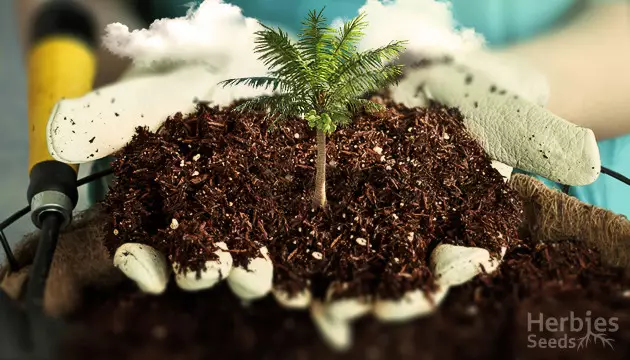
Over the past few years, coco coir has become an increasingly popular growing medium among beginner and expert cannabis growers alike. Why is growing weed in coco so prevalent in the cannabis cultivation scene? It’s simple. Growing cannabis in coco can make a good grow even better when done right, offering both healthier plants and higher yields. If you’re interested in learning all there is to know about coco coir, this article will get you started.
All You Need To Know About Coco Coir
As its name suggests, coco coir is actually the natural fiber of coconut trees that’s been processed and recycled. Coco is really just ground-up coconut husks. It’s the processed coconut fiber that would usually be thrown away after coconuts are harvested, making it a renewable resource that offers a unique environmentally friendly alternative to traditional cannabis grows.
Growing in coconut fiber is quickly becoming one of the most popular mediums for cannabis growers interested in cultivating good crops and maximizing their harvest. It can be used for both indoor and outdoor grows, and with a pH level of 6.5-7, it’s extremely similar to soil that hasn’t been fertilized.
3 Common Types Of Coco Coir
When looking for coco coir, you’ll find a few options available at your local grow store. The following are the three most common types of coco coir used for growing weed.
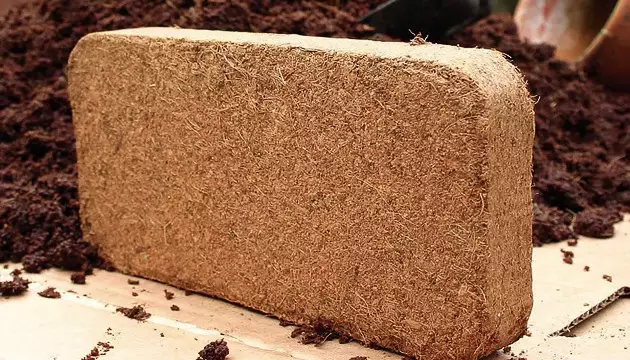
- Coco Bricks: Bricks of coco coir are common and come in various sizes depending on your growing needs. These bricks must be soaked in water before they can be used, which breaks them up and makes pliable enough to mix with soil or for use on their own.
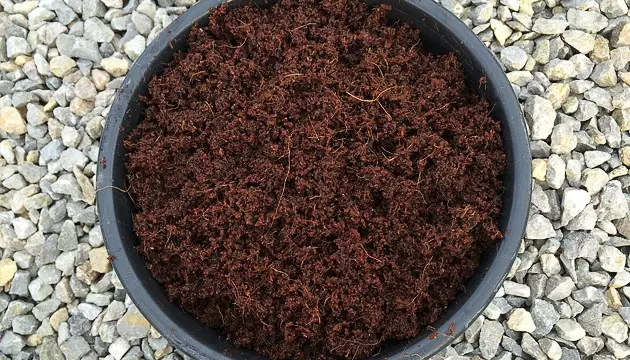
- Coco Blends: Coco coir blends can be purchased at your grow store just like soil, taking out the need to soak big bricks at home. Coco blends typically contain a mixture of coco, perlite and/or clay pebbles. These coco blends can be used on their own or blended with soil to make a coco coir soil mix. Again, the quality of your coco will determine the quality of your overall grow, making it essential to purchase a high-quality blend.
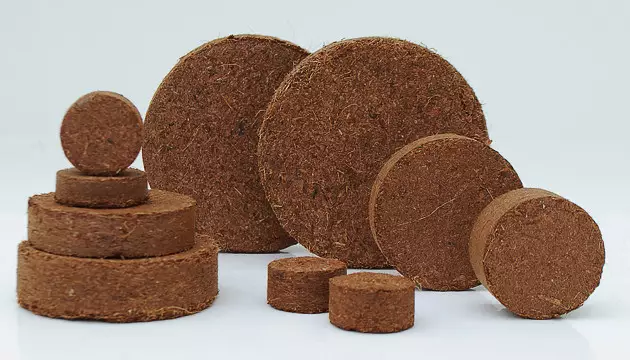
- Coco Pellets: Coco pellets are small round disks of coco coir that are perfect for growing seedlings. Why? Starting cannabis seeds in coco pellets leads to strong, rapid root development. Once seeds have germinated and are ready to be transplanted, simply transplant the entire coco pellet into your growing medium of choice.
Can You Grow Weed In Coco?
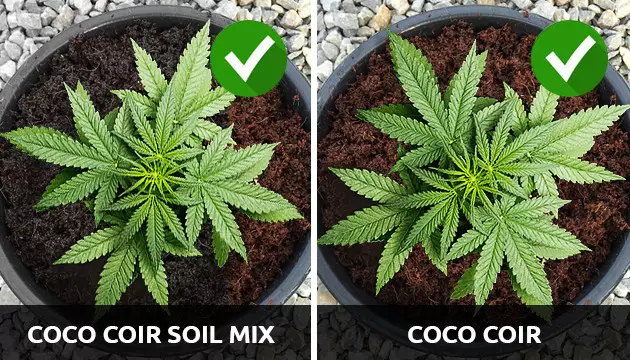
Weed can be grown easily in coco coir, ultimately enhancing plant health and increasing yields. To grow weed in coco coir, you can use it on its own or mix it in with your soil.
When using a coco grow medium, keep in mind that if you’re using coco on its own, plants will need to be consistently fed fertilizer throughout their lifecycle, as they aren’t receiving any nutrients from the soil.
You can make a coco coir soil mix by blending coco and soil together. Most growers typically add about 20% coco to soil blends. If you choose to grow weed in a coco soil blend, make sure nutrients are adjusted accordingly depending on your coco/soil ratio.
Is Growing In Coco Coir Considered Hydroponics?
Coco coir might look and feel just like soil, but it’s not. Coco is what’s considered a soilless medium – many growers even consider it hydroponics! Because it doesn’t contain any of the nutrients naturally present in soil, growing in coco requires a consistent feeding schedule throughout the entire lifecycle of your plants.
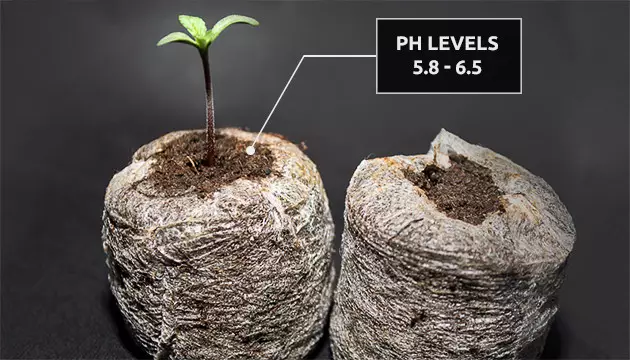
Maintaining proper pH levels is also essential. Coco naturally contains a nearly neutral pH level, giving growers complete control over the pH their plants are given. For plants to truly thrive, pH levels should be between 5.8-6.5 when growing in coco to ensure optimum nutrient uptake.
Thus, because of the full control growers have over the nutrient intake of the plants and the pH of the medium, growing in coco has much more in common with hydroponics than growing in soil.
Growing Weed In Coco Coir
It’s no wonder that coco has now become one of the most popular mediums for growing weed. Growing weed in coco coir can truly take your grow to another level. Easy to use for beginners and revered by individuals that have been growing for years, using a coco grow medium can improve plant health, boost plant size and increase overall yields. How? Here are all of the benefits of growing cannabis in coco.
What Are The Benefits Of Growing Cannabis In Coco Coir?
There’s a reason so many growers are turning to coco coir to meet their cannabis growing needs. The following are a few of the benefits of growing in coco coir:
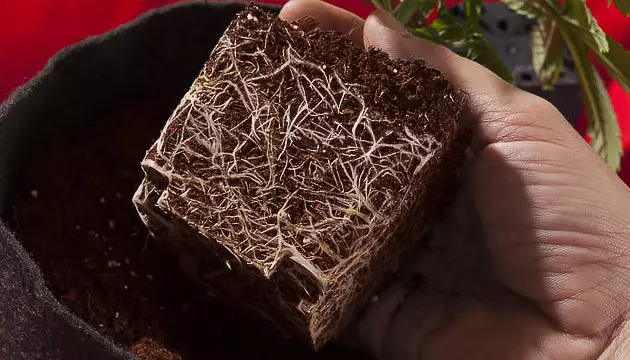
- Healthy, Rapid Root Development: Growing in coco is excellent for water retention and to ensure the roots get the precise amount of nutrients they need. When compared to soil, roots tend to be healthier and develop more rapidly.
- Better Drainage: The structure of coco coir is very light and airy. This naturally offers better drainage and is perfect for preventing overwatering.
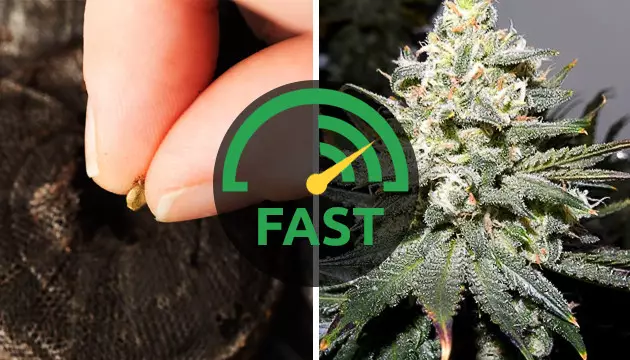
- Faster-Growing Plants: Growing in coco offers a lot of the same benefits of growing hydroponically, which makes plants grow more rapidly because nutrients are fed to the roots directly. Without having to search for nutrients, these healthy root systems quickly turn into large, healthy plants and offer increased yields come harvest time.
- Similar To Growing In Soil: Growers accustomed to soil will find that coco coir is very comparable. Cannabis plants are planted in pots just like they would be with soil, but are fed water that contains nutrients.
- Eco-Friendly And Reusable Growing Option: Coco coir uses the parts of coconut fruit that would typically go to waste. It can also be reused, allowing for 2-3 additional grows when treated properly.
Are There Any Disadvantages To Growing With Coco?
With any type of growing medium comes certain drawbacks, and coco coir is no exception. Understanding some of the cons associated with coco grows can help you deal with any problems you might face before they start:
- Poor Quality Coco Can Lead To Lower Quality Crops: Some coco coir contains high salt content, which can be terrible for your plants. Poor-quality coco bricks can also be overdried, meaning they won’t crumble properly no matter how much water they’re given. Make sure you buy coco that’s been buffered and rinsed to ensure that any chemical residue doesn’t negatively impact plant growth.
- Possible Nutrient Lockout: While coco coir holds onto and releases nutrients when needed, it has a tendency to hold calcium, magnesium and iron. To ensure healthy crops, growing in coco typically requires nutrients that boost levels of iron, calcium and magnesium. Look for a “Cal-Mag” supplement when growing in coco to avoid nutrient lockout of these essential nutrients.
How To Properly Rehydrate Coco Coir
If you’re planning to use coco coir, you’ll need to know how to prepare it. Getting coco ready for your grow basically just requires it to be rehydrated, which is a very simple process.
Whether you’re rehydrating indoors or outside, fabric Smart Pots (or something similar) work best, as they’ve got handles and are designed for optimal plant growth. You’ll also need a 5-gallon or larger bucket (depending on pot size) to catch excess drainage.
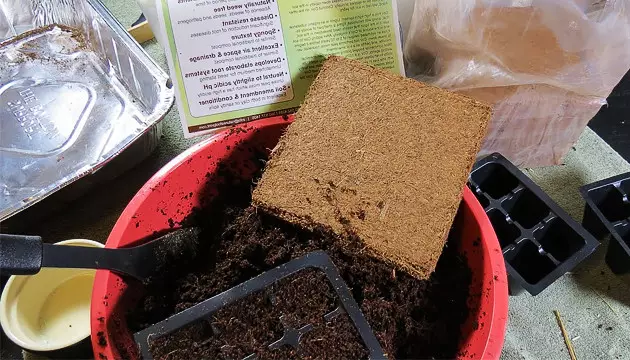
Here’s how to prepare coco coir:
- Line the inside of your 5-gallon bucket with your fabric pot.
- Place the brick of coco coir inside the fabric pot.
- Fill up the fabric pot/bucket halfway with water. Once the water hits the coco coir, you’ll notice it beginning to expand almost immediately.
- Allow approximately 10-15 minutes for the coco to become fully hydrated. You’ll know it’s ready when it feels soft throughout the entire bucket.
- When the coco is fully rehydrated, pick up the fabric pot and let the excess water drain into the bucket.
Once coco is completely rehydrated, it’s ready to be used on its own or mixed with soil or perlite. When adding coco coir to soil, growers typically use 10-20% coco and 30% perlite blended into the mix. When added to soil, coco coir helps loosen soil up and reduces compaction, ultimately offering better soil structure for roots to flourish.
Feeding Cannabis Plants Grown In Coco Coir
Regardless of the medium they’re grown in, all cannabis plants need nutrients. When growing in coco coir, feeding your plants is crucial. One of the best tips for growing in coco coir is to use the right type and optimal levels of nutrients throughout your plant’s lifecycle.
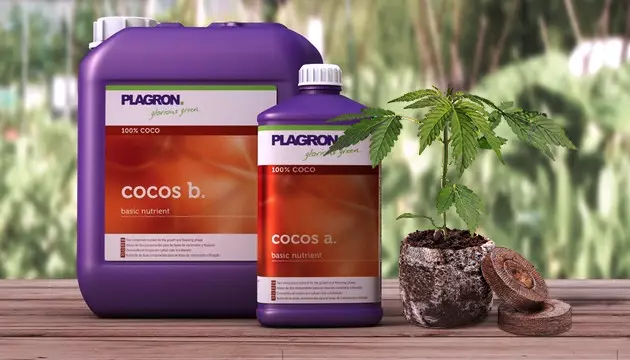
If you’re growing in coco, you should always use nutrients designed specifically for this medium (such as Advanced Nutrition Plagron Cocos A & B fertilizer) or nutrients designed to be used in hydroponic setups.
We mentioned earlier that coco coir grows require calcium, magnesium and iron, so using a Cal-Mag supplement is recommended. At the beginning of your grow, the Cal-Mag supplement should be used at full strength with other nutrients for approximately 2-3 weeks. During the remainder of the grow, Cal-Mag can still be used but in significantly lower amounts.
Because growing cannabis in coco requires nutrients, it can be easy to overfeed your plants. To avoid nutrient buildup, consider giving plants plain water every other watering. Also keep in mind that water should always be adjusted to a pH of 5.5-6.5 before it’s given to plants.
Should You Grow With Coco Coir?
Once you’ve got the basics down of growing in coco coir, it’s really easy and can seriously improve your cannabis growing game. After all, coco plants tend to be bigger, more beautiful, and bursting with bigger and stickier buds than when grown in soil alone. If you’ve yet to discover the benefits of coco coir for yourself, we highly recommend giving it a try to see what a big difference growing in coconut fiber can really make.
Herbies Head Shop expressly refuses to support the use, production, or supply of illegal substances. For more details read our Legal Disclaimer.





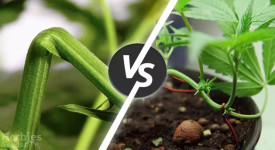




Thank you for leaving a comment for us!
Your feedback will be posted shortly after our moderator checks it.
Please note that we don’t publish reviews that: